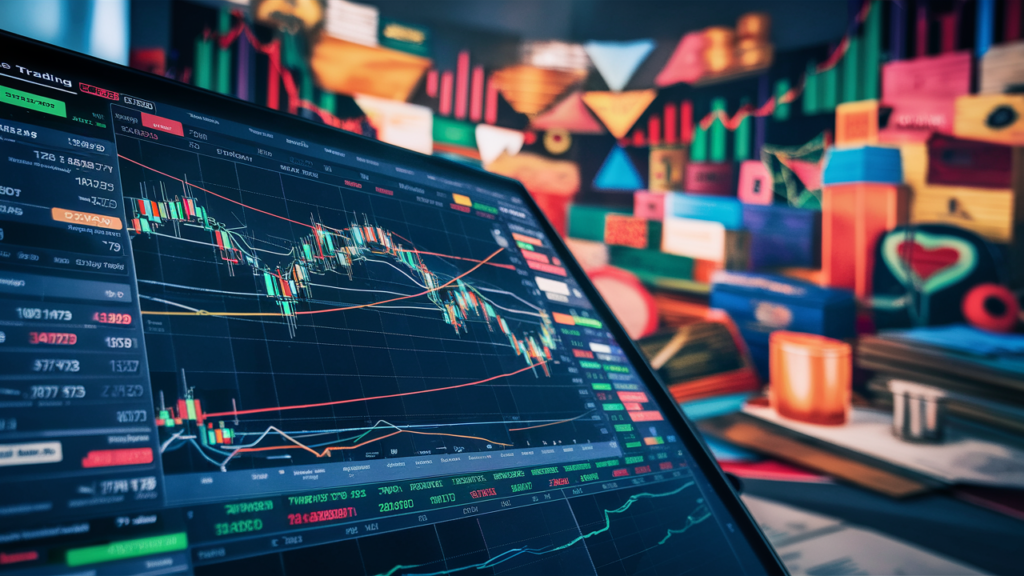Crypto Signals: Discovering the 5 Best Indicators in Cryptocurrency

Summary:
- Learn about the most effective indicators in cryptocurrency trading.
- Understand the importance of integrating crypto signals with personal analysis.
- Discover actionable tips for using indicators to enhance your trading strategy.
Welcome to our comprehensive guide on identifying the best indicators in cryptocurrency trading. As a group of seasoned traders, we’ve explored various strategies and tools to navigate the volatile crypto market. This post delves into the most reliable indicators and how to use them alongside crypto signals to maximize your trading success. By the end, you’ll understand which indicators can give you an edge in the crypto world.
Understanding Crypto Signals
Crypto signals are trading recommendations provided by experienced traders or automated systems, suggesting when to buy or sell a specific cryptocurrency. These signals are based on various market factors, including technical analysis, fundamental analysis, and market sentiment.
The Role of Indicators in Crypto Trading
Indicators are essential tools that help traders analyze market trends and make informed decisions. When used effectively, they can provide valuable insights into price movements, trends, and potential entry and exit points.
Top Indicators in Cryptocurrency Trading
- Moving Averages (MA)
- Simple Moving Average (SMA): The SMA calculates the average price of a cryptocurrency over a specific period. It helps identify the overall direction of the market.
- Exponential Moving Average (EMA): The EMA gives more weight to recent prices, making it more responsive to new information. This indicator is useful for spotting short-term trends.
- Relative Strength Index (RSI)
- The RSI measures the magnitude of recent price changes to evaluate overbought or oversold conditions. An RSI above 70 indicates overbought conditions, while an RSI below 30 suggests oversold conditions.
- Moving Average Convergence Divergence (MACD)
- The MACD is a trend-following indicator that shows the relationship between two moving averages of a cryptocurrency’s price. It helps traders identify potential buy and sell signals.
- Bollinger Bands
- Bollinger Bands consist of a middle band (SMA) and two outer bands (standard deviations). They help traders identify volatility and potential price breakouts.
- Stochastic Oscillator
- The Stochastic Oscillator compares a cryptocurrency’s closing price to its price range over a specific period. Similar to the RSI, it indicates overbought and oversold conditions.

Finding the Right Indicator
When I first started trading cryptocurrencies, I experimented with various indicators. Combining the RSI and MACD provided a balanced approach to identifying entry and exit points. Over time, I learned to trust these indicators, especially when they aligned with reliable crypto signals.
Integrating Crypto Signals with Indicators
- Confirming Signals: Use indicators to confirm crypto signal recommendations. For example, if a signal suggests buying Bitcoin, check the RSI and MACD to see if they support the buy recommendation.
- Timing Entries and Exits: Indicators can help you fine-tune your entry and exit points. For instance, if a crypto signal suggests selling at a certain level, use Bollinger Bands to see if the price is approaching an upper band, indicating a potential reversal.
- Managing Risk: Indicators like the RSI and Stochastic Oscillator can help you avoid overbought or oversold conditions, reducing the risk of entering trades at unfavourable times.
The Importance of a Budget
Trading without a budget is risky. Establishing a budget helps you manage your funds effectively and avoid emotional decisions. Allocate a specific amount for signal-based trading and stick to it.
Suppose a trader uses a crypto signal to buy Ethereum at $2,500 with an RSI indicating oversold conditions. The trader sets a stop-loss at $2,400 and a take-profit at $2,700. By combining the crypto signal with the RSI, the trader makes an informed decision, managing risk and maximizing potential profit.
Actionable Tips for Using Indicators
- Start with a Few Indicators: Don’t overwhelm yourself with too many indicators. Start with one or two, like the RSI and MACD, and get comfortable using them before adding more to your strategy.
- Backtest Your Strategy: Before using indicators in live trading, backtest your strategy on historical data to see how well it performs. This will give you confidence in your approach.
- Stay Updated: The crypto market is dynamic. Follow the latest news and market trends to understand the context behind the signals and indicators.
Reflecting on our journey with crypto signals and indicators, it’s clear that these tools, when used correctly, can significantly enhance your trading strategy. The key lies in choosing reliable indicators, starting small, and continuously learning. As experienced traders, we’ve seen the benefits of integrating crypto signals with robust indicators. Now, it’s your turn to explore and decide which indicators work best for you.
Are you curious about which signals best support your trading strategy across forex, crypto, and commodities? Join our community at The Signals Oracle, where we provide actionable insights, expert analysis, and a supportive network to help you succeed. Sign up now for our free resources and start your journey towards more informed trading!
Ready to elevate your trading game? Sign up for a trading signals package risk-free today!